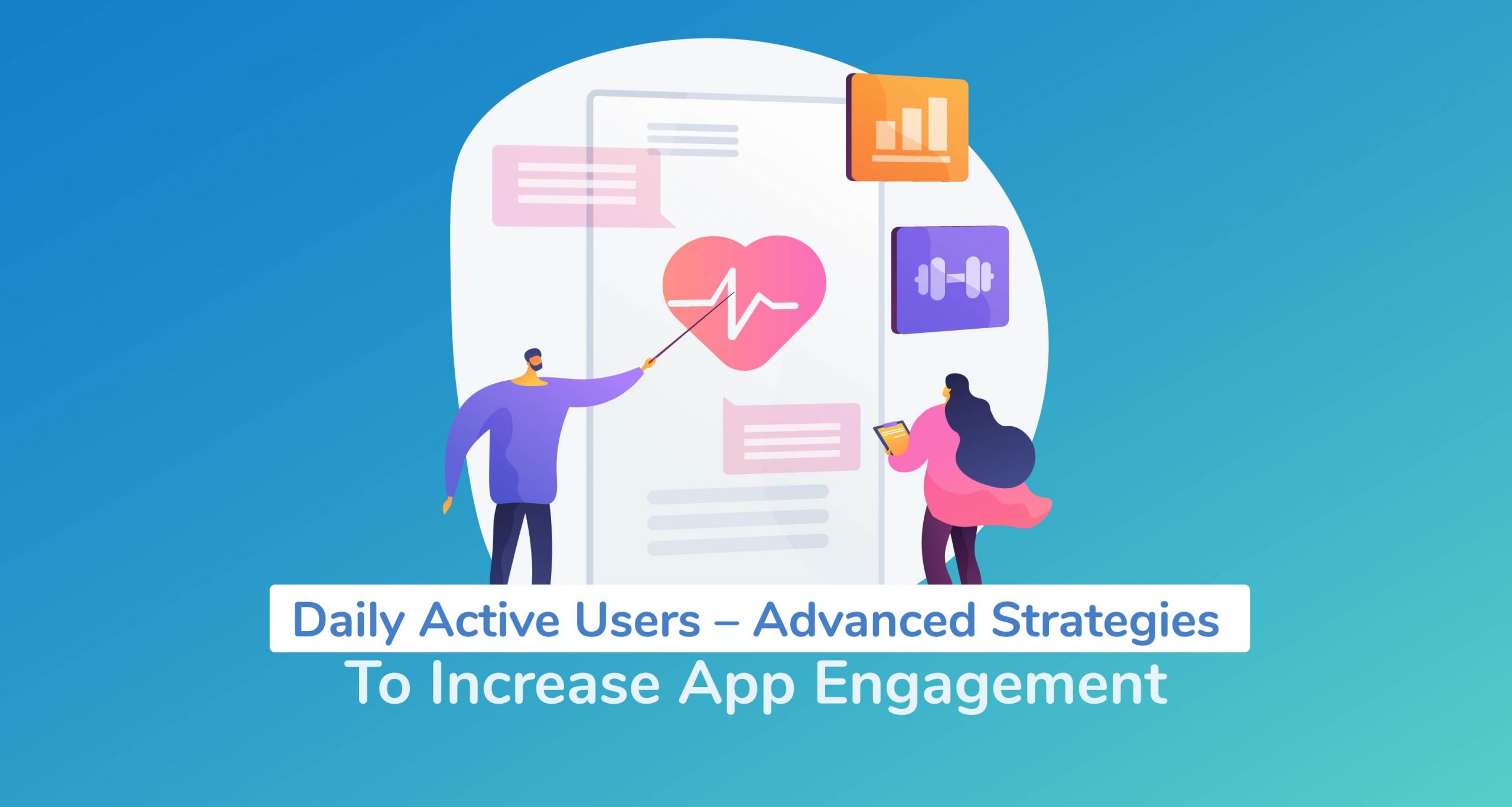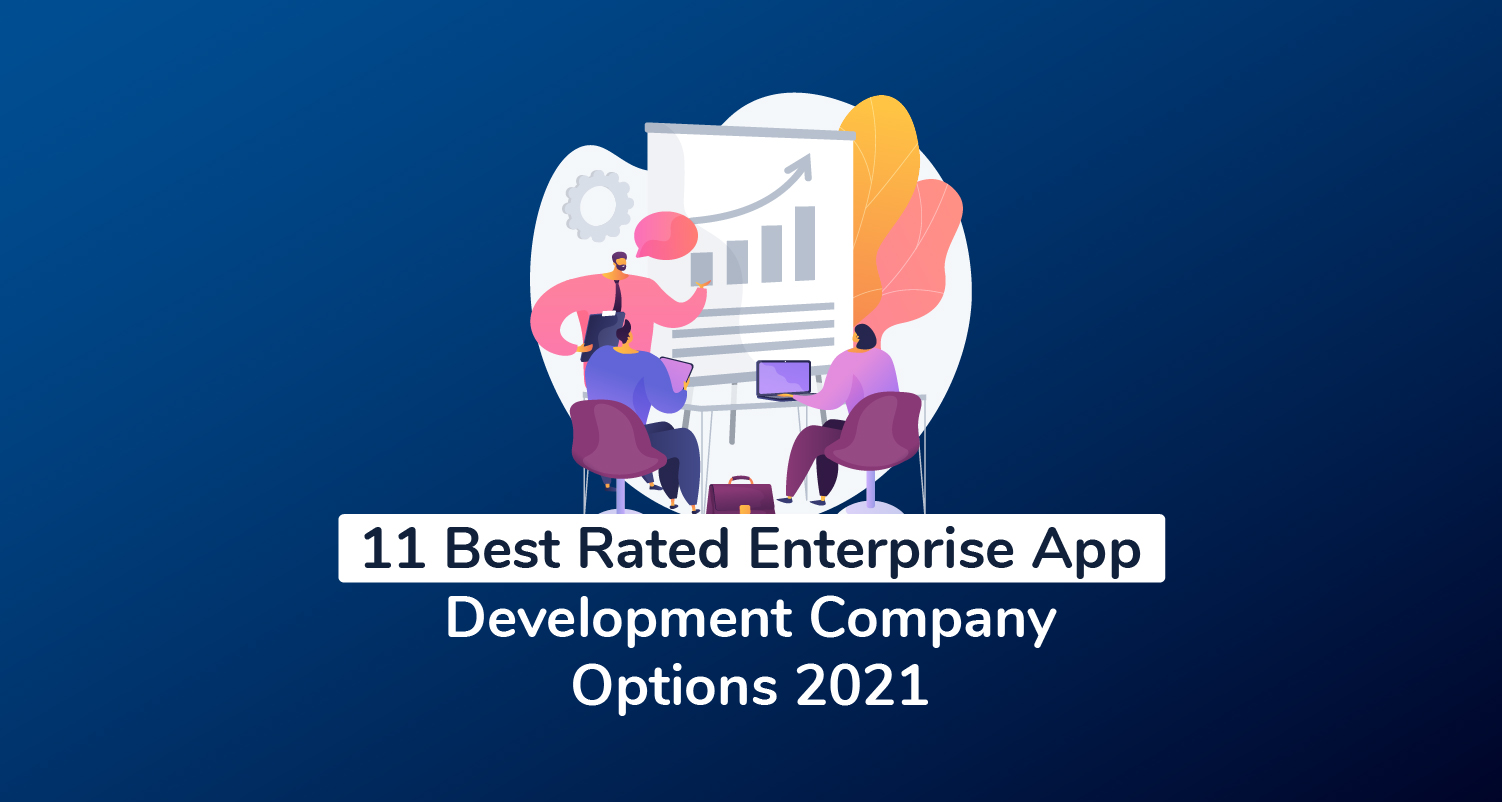
iOS vs Android App Development – Where Should Your App Start?
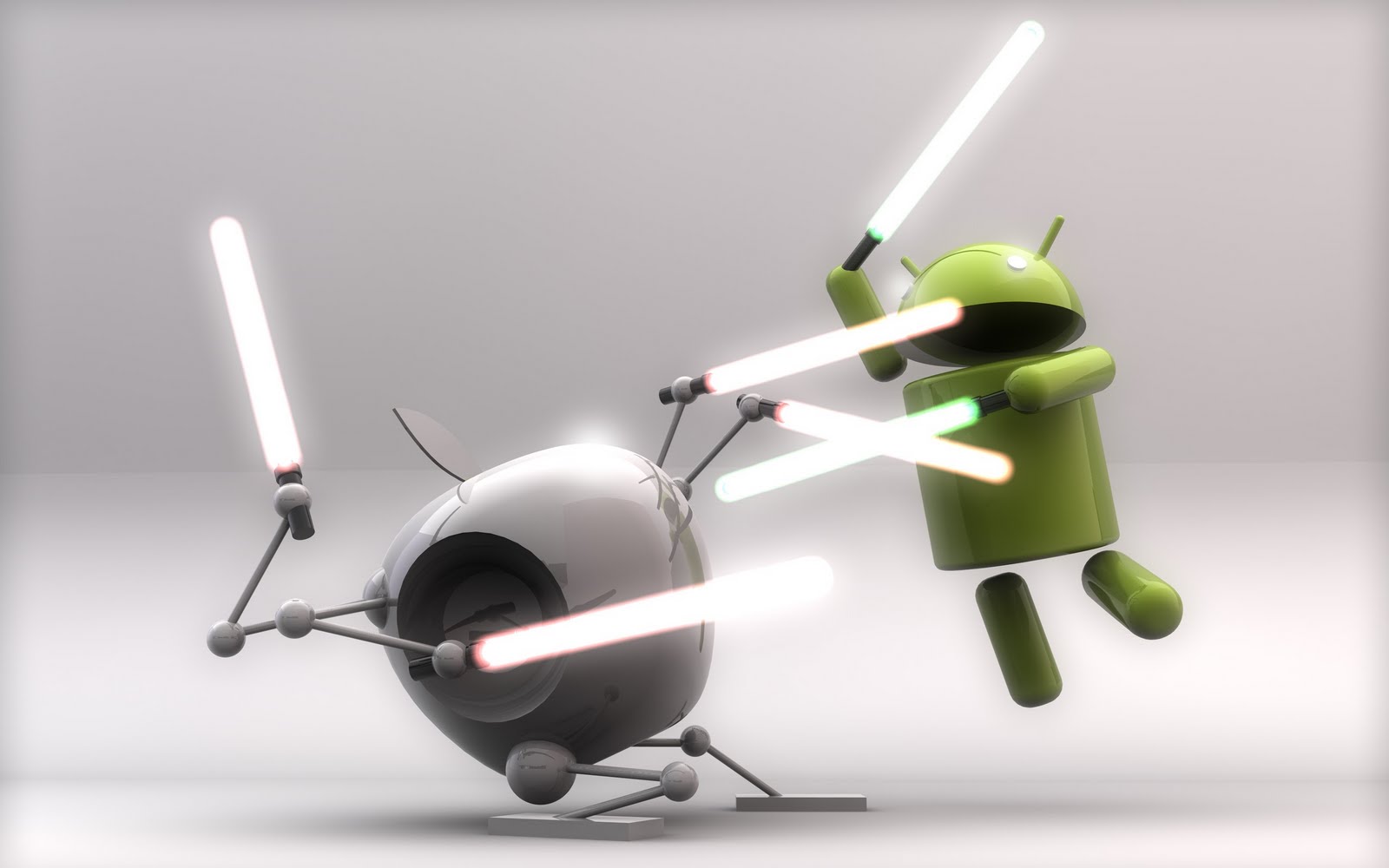
iOS vs Android – That’s often one of the biggest questions for app developers as they prepare to embark on mobile app development.
While there are many different types of mobile OS platforms that you could base your app on, Android and iOS happen to enjoy a combined market share of over 99%. So, it’s only natural that you’d launch your new mobile app on either the Apple App Store or the Google Play Store.
Table of Contents
- Where The iOS vs Android Question Comes In
- Android vs iOS 2022 Stats And Facts For Mobile App Developers
- #1. iOS vs Android Market Share
- #2. iOS vs Android Revenue And App Downloads
- #3. iOS vs Android Programming
- #4. iOS vs Android App Launch
- iOS vs Android – What The Industry Facts Mean For Your App Development Process
- #1. Android is Bigger, But Apple Is Less Competitive and Closing In
- #2. Apple Is Where The Big Bucks Are, While Android Has The Numbers For Ad Viewership
- #3. Android Programming Is Now As Easy As iOS Coding, But Still Much More Customizable
- #4. You’ll Spend Less Time And Money Developing An iOS App
- #5. It’s Easier To Publish Your App On The Google Play Store, But The Review Process Is Much Faster On The Apple App Store
- Verdict – Which Is Best For Your Mobile App Between iOS and Android?
- Key Takeaways
Ok, I know what you might be thinking. That the safest bet would, of course, be publishing your app simultaneously across both platforms. That would mean parallel developing iOS and Android versions separately but parallel to each other – or, alternatively – building them concurrently from a shared codebase using cross-platform app development resources.
Sounds like the ideal situation, I must admit. But, here’s the problem…
Where The iOS vs Android Question Comes In
As a professional who has managed mobile app projects for years, I can tell you for a fact that multi-platform app development is often draining and costly.
Instead of chasing Android and iOS at the same time, you’d have better luck if you started your journey with just one of the platforms. At least then you can patiently gather feedback from your initial app users, and then use the insights to perfect the mobile app as it gradually expands to other platforms.
Instagram is one example of a mobile app that followed this route to lay the groundwork for cross-platform success.
You too have the chance to pull off something similar or even bigger. It all depends on, among other factors, how you structure the mobile app development process across the two leading platforms.
Now, that’s precisely where the iOS vs Android question comes in.
This is where you ask yourself:
- Where should you first launch the mobile app – on Android or iOS?
- Which between the Apple App Store and Google Play Store is more promising for a new app?
- Which app store offers the best demographic for your app?
- Which platform will drive more mobile app downloads?
- Where do you stand to generate more revenue?
- And make no mistake about this. While the high-level app promotion campaigns we’ve developed here at PreApps work well with both iOS and Android, our seasoned experts will tell you that the app growth journey is particularly seamless if you get the app development basics right.
So, to help you make a well-informed decision, here goes all the recent iOS vs Android facts that might influence your app development process.
Android vs iOS 2022 Stats And Facts For Mobile App Developers
#1. iOS vs Android Market Share
- Android holds 70.97% of the global mobile operating system market share, while iOS boasts a 28.27% market share.
- The Google Play Store currently hosts the highest number of mobile apps – with a total volume of over 3.48 million apps spread out across different categories – whereas the Apple App Store has, so far, expanded its app collection beyond 2.22 million – making it the second-largest mobile app store.
- There are more than 3 billion active Android devices on the globe, while Apple reports that the number of active iOS devices hit 1.8 billion in 2022.
- iOS is more popular than Android in some of the richest regions of the world. In North America, for instance, iOS enjoys a market share of 53%, while in Japan, it has stretched to dominate 67% of the market.
- In contrast to iOS, Android is largely popular in the developing regions of the world. It happens to dominate 84% of the market in Africa, 90% of the South American market, and 81% of Asia’s mobile OS market. You’ll also find that Android is more popular in most of the European territories.
#2. iOS vs Android Revenue And App Downloads
- While the year-on-year revenue figures continue to grow across both platforms, iOS has maintained a considerable lead over Android in recent times. In 2018, for instance. the Apple App Store generated 88% more revenue than the Google Play Store. Then by 2021, the annual App Store returns had risen to $85.1 billion, whereas the Google Play Store accounted for $47.9 billion.
- From 76 billion in 2018, the number of Android app downloads on the Google Play Store has now grown beyond 111.3 billion per year. That places it squarely ahead of iOS, whose annual app downloads add up to about 34.4 billion.
- Although the Google Play Store leads in the number of mobile app downloads, it turns out that Android users tend to download fewer apps per device than iOS users. The average Android user downloads 4.1 mobile apps per month, with 3.4 of them being free apps. Compare that with the average iOS user, who is said to download 6.2 mobile apps per month, of which 4.3 happen to be free apps.
- iOS users tend to have higher incomes and better purchasing power than their Android counterparts. The average annual salary for an iPhone user is about $53,251, whereas a typical Android user earns a salary of $37,040 per year.
- While Android users have been seasoned to expect free apps, iOS users are 20-30% more likely to pay for mobile apps.
- About 45% of iOS users have five or more paid apps or subscriptions installed on their devices – while on Android, only 19% of the users have attained those numbers.
- iOS alone accounts for 79% of the revenue made from app subscriptions, which is almost four times more than the 20% that is generated from Android apps.
- iOS boasts 50% more in-app purchases than Android. And in terms of value, iPhone users tend to spend two and half times more on in-app purchases than their Android counterparts.
- Overall, it turns out that while only 4.6% of Android users are making an app-related payment every month, iOS sees 71% of its users committing to the same.
#3. iOS vs Android Programming
- Apple developers use Objective-C or Swift programming languages to code iOS mobile apps, while Android apps are built on Java, C++, and Kotlin programming languages.
- Android is based on an open-source framework that provides uninterrupted access to its source code, whereas iOS is considered to be a closed-source operating system.
- Some of the popular iOS development tools and resources include iOS SDK, XCode, Swift Playground, and TestFlight. Android developers, on the other hand, rely on the Android SDK development kit, Firebase, and the Android Jetpack.
- While the adoption rate for new iOS updates among users typically goes as high as 90%, it just so happens that as much as 50% of Android devices are running outdated versions of the mobile operating system.
- With cybercriminals now releasing an average of 482,579 new Android malware per month, app developers are expected to spend more resources and time sealing possible vulnerabilities.
- Android apps require 40% more code than similar iOS apps. That makes Android app development take 30% longer than iOS app development.
#4. iOS vs Android App Launch
- To get your app published on the Google Play Store, Android developers are required to pay a one-off fee of $25. That’s a stark contrast to the Apple App Store, which charges iOS developers an annual fee of $99 for the same.
- On average, the Apple App Store publishes about 30,000 new iOS apps per month. That’s barely 20% of the Google Playstore’s rate, which can go as high as 130,000 Androids apps in a good month.
- The iOS apps that are submitted to the Apple App Store for review are typically taken through a series of automated static and dynamic checks, before finally being forwarded to human reviewers. The Google Play Store, on the other hand, focuses largely on developer integrity, privacy protection, and possible malware threats.
- After conducting thorough pre-launch checks on the submitted iOS apps, Apple typically rejects 33% to 36% of them. That translates to about 1.7 million rejections per year, from a pool of about 5 million app submissions.
- Once you submit your iOS app to Apple, you can expect the review process to take about one to two days. 90% of the submissions are checked within 48 hours, with 50% taking less than a day. On the Google Play Store, however, you’ll be expected to wait for up to 7 days.
iOS vs Android – What The Industry Facts Mean For Your App Development Process
Now that we’ve outlined the most critical iOS vs Android stats, let’s explore what they all mean to mobile app developers….
#1. Android is Bigger, But Apple Is Less Competitive and Closing In
While both platforms are incredibly popular, Android continues to rule the market as the most widely used mobile app OS. Its global market share of 70.97% gives you a user base of over 3 billion devices to target with your mobile app.
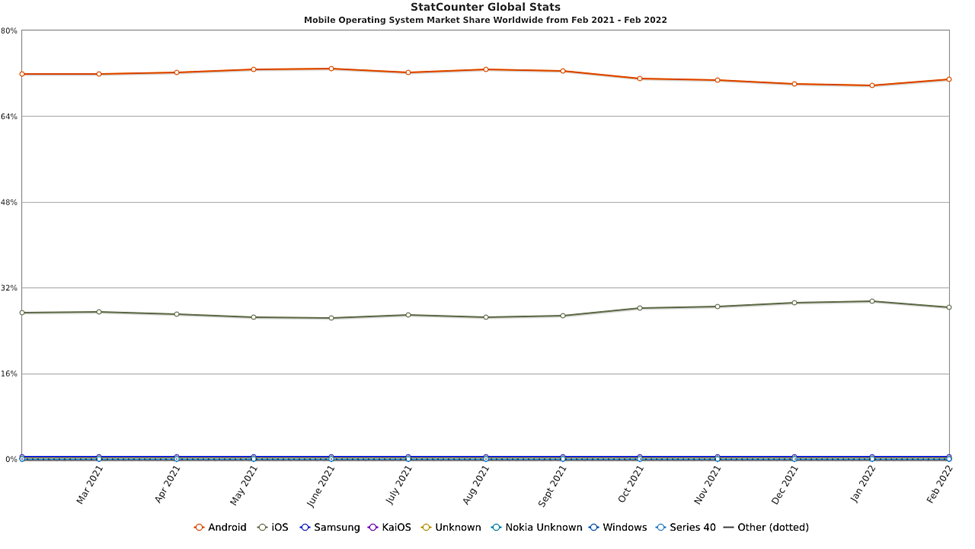
The numbers are even more promising across the developing regions of the world. If you’re building a mobile app for users in South America, for instance, you might want to start with Android – as it’ll link you up with 90% of the smartphone users on the continent.
The same applies to Asia and Africa, where Android has so far grown to dominate 81% and 84% of the respective markets.
However, don’t be quick to dismiss the iOS market share. Although the audience size here lags far behind Android’s global reach, 1.8 billion is still a sizable volume.
And, in particular, iOS tends to be significantly more prominent across the richest regions of the globe.
Take the Western markets, for example. If you’re building a smartphone app for users in the US or UK, you might be much better of with iOS, as it happens to enjoy a bigger market share than Android. Apple devices account for 53% of the US market and 54% of the UK.
Still, that’s nothing compared to Japan, where iOS has completely trampled Android with a huge market share of 67%.
Another interesting thing about iOS is, it presents less competition than the Android market.
You see, when you finally get to launch your new app on the Apple App Store, you’ll only be competing with about two million other apps.
Then considering the fact that the average iOS user downloads about 6.2 mobile apps per month, you’ll have a pretty fair chance of winning over a decent volume of prospects – and it gets even better with our strategic app promotion campaigns.
With Android, though, you’ll be up against 3.5 million strong and counting. Despite its extensive size, the Google Play Store continues to throw in over 100,000 new apps per month.
Now, combine that with the tendency of Android users to download fewer mobile apps per device. The average user here downloads 4.1 apps per month, which is 1.9 less than their iOS counterparts.
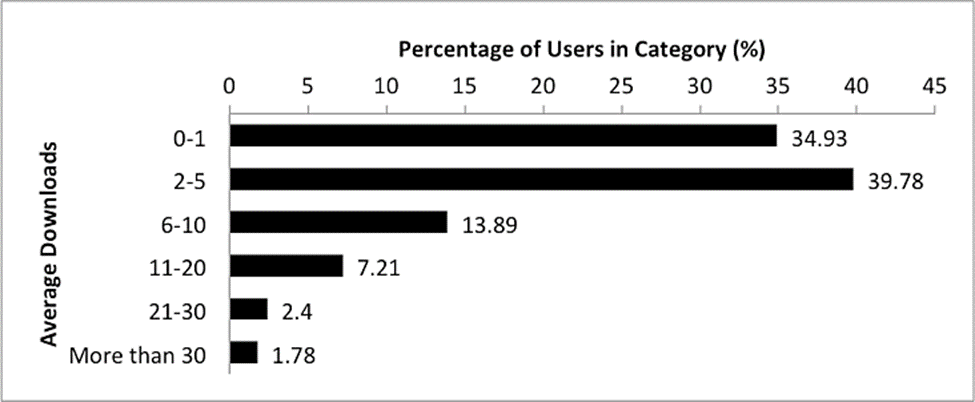
So, you could say that while Android offers a much larger pool of prospective users, expect cutthroat competition from other app developers.
iOS, on the other hand, might not be as popular globally, but it has sweet spots. US, Japanese, and UK-based developers will enjoy their time on the App Store, as it resonates best with audiences in those regions.
#2. Apple Is Where The Big Bucks Are, While Android Has The Numbers For Ad Viewership
What iOS misses in numbers, it manages to make up for it through earnings.
Now, to put that into perspective, you could start by comparing the Android vs iOS app download numbers.
The App Store currently manages about 34.4 billion app installs per year, while the Google Play Store attracts an impressive 111.3 billion – consequently placing Android light-years ahead of iOS.
However, the battle doesn’t end there. Just when the mobile app download stats appear to conclude the contest in favor of Android, iOS pulls off a rather drastic comeback that blows the market wide open.
It turns out that in spite of Android apps drawing over 70% of the annual app downloads, the bulk of the money ultimately ends up with iOS apps.
You see, in recent years, the Apple App Store has maintained a considerable lead over the Google Play Store when it comes to app revenue. So substantial is the lead, in fact, that by 2018, iOS apps were making 88% more than their Android counterparts.
The year-on-year earnings for both platforms have since increased by a huge margin, but the ratio between the two remains the same. The Google App Store is now generating $47.9 billion per year, whereas the Apple App Store is turning its inferior app download numbers into a whopping annual revenue of $85.1 billion.
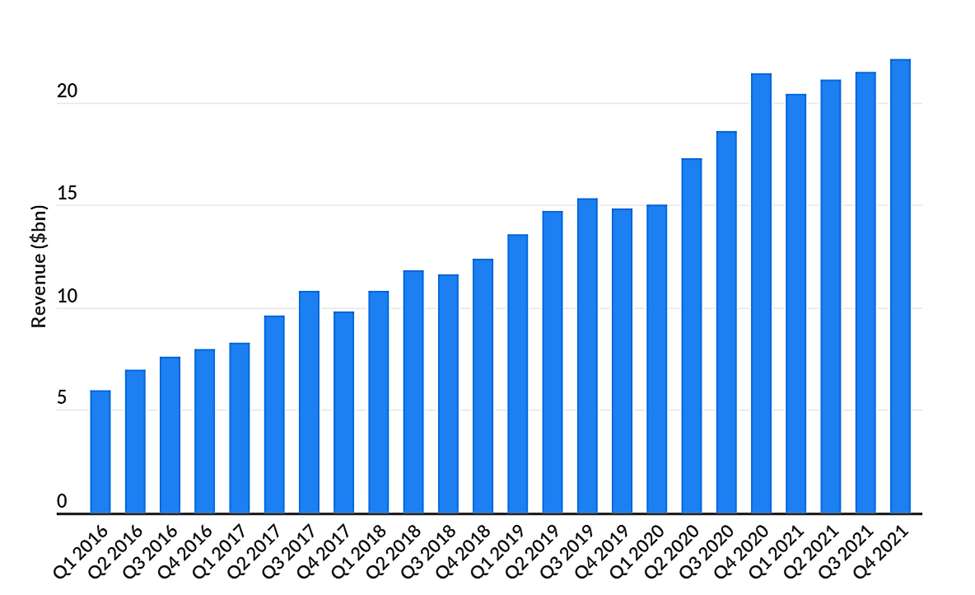
And why the stark contrast?
Well, a lot of it has to do with the attitudes and spending power of mobile app users.
If you take a look at recent consumer surveys, for instance, you’ll notice that iOS users have deeper pockets and are more open to paying for apps, making subscriptions, as well as processing in-app purchases.
Apple users are not only 20-30% more likely to make payments, but also tend to spend two and a half times more on in-app purchases than their Android counterparts.
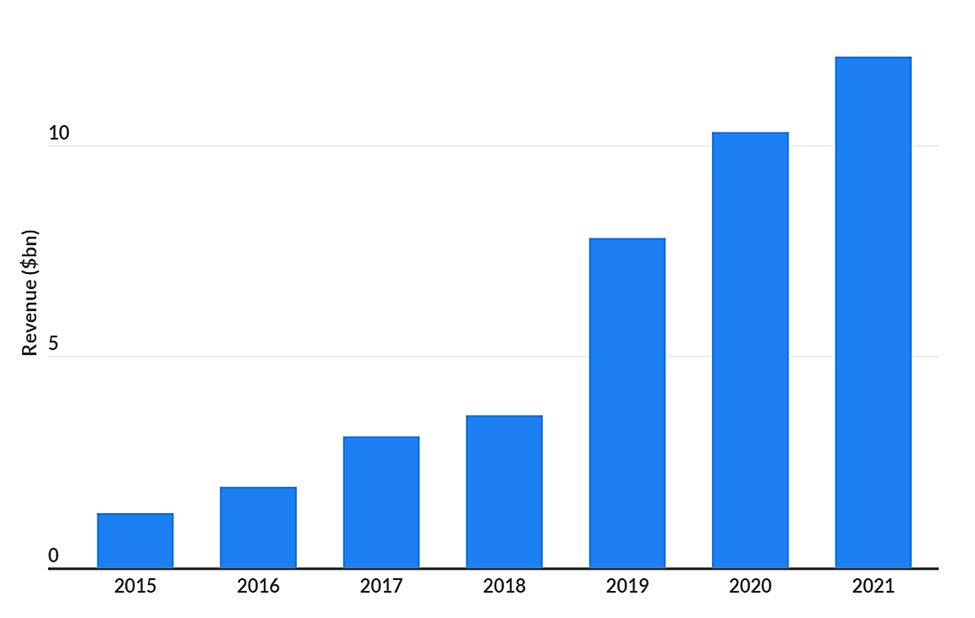
Ultimately, you’ll find that 71% of iOS users have committed to at least one app payment per month, a stark contrast to Android’s 4.6%. The result is that iOS apps end up with 50% more in-app purchases, with as much as 79% of the combined mobile app subscription revenue going to the App Store’s coffers.
In simple terms, therefore, you can expect to earn more from your paid app if you launch it on the Apple App Store.
The Google Play Store, on the other hand, is a better option for free apps that rely on ads for revenue generation. Android users have been seasoned to always go for free apps, and the huge volume of downloads means that you stand to gain quite a sizable audience for your ads – which should then translate into favorable profits.
#3. Android Programming Is Now As Easy As iOS Coding, But Still Much More Customizable
When it comes to programming, I must admit that the iOS vs Android contest turns into a rather subjective one – whose outcome depends largely on your personal preferences and competencies.
Android and iOS, as you’ve probably figured out by now, follow very different rules and procedures during app development. Android tends to lean towards universal accessibility and unrestricted customization, while iOS apps are built on a more intricately structured but deeply streamlined framework.
Now, to be specific, the Android platform itself happens to be fully open-source. The source code is accessible to all developers, and if you manage to hone it, you’ll be able to extensively customize your apps at a much deeper level than with Apple’s ecosystem.
Java was the original programming language here until Google announced a shift in the status quo. Kotlin is now the officially preferred coding language, and Android app developers are loving it.
You see, while Java tends to be a bit cumbersome at times, the modern Kotlin programming language is simpler, faster, and more concise. This translates into a more seamless and powerful programming process.
But what does it mean for the Android vs iOS contest?
Well, back when Java was the official programming language, mobile app developers had an easier time working with Apple’s Swift code. Its more readable structure made the iOS app development process a breeze for both learners and experienced coders. Hence, you’d take less time and resources to build an Apple mobile application.
Then in came Kotlin and the dynamics changed. The modern programming language is turning out to be as easily readable and straightforward as the Swift system.
It achieves this without taking away the traditional benefits of open-source architectures. App developers who know their stuff can still dive deep into the system to make their own custom tweaks. So, in simple terms, there are practically no limits when you’re developing Android applications.
But then again, here’s the kicker. This open-source approach means that even cybercriminals get to sample and understand the source code.
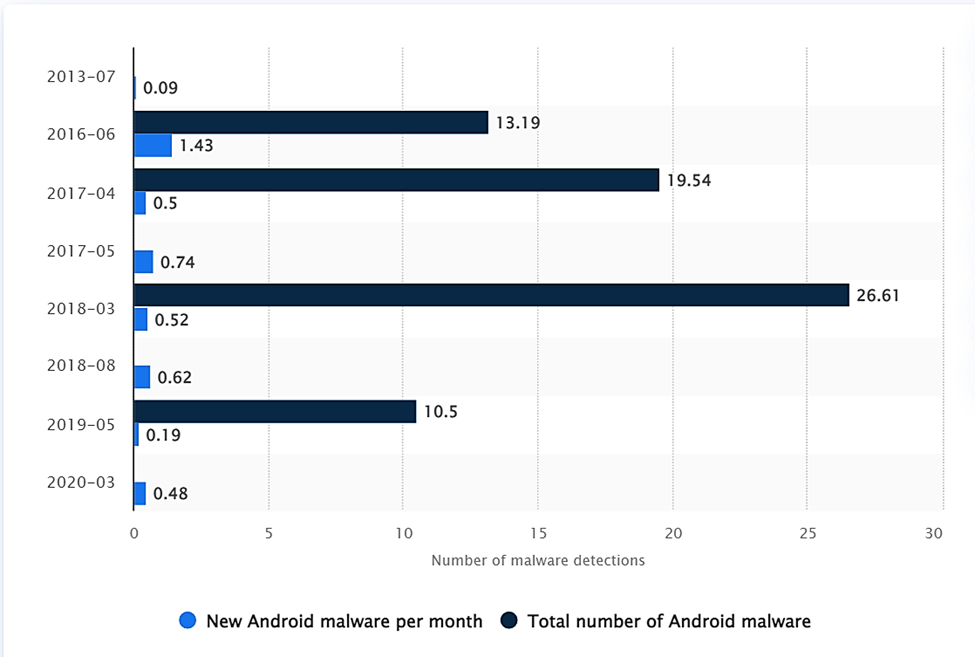
As a result, you’ll find that Android apps are intrinsically more vulnerable to malware and security breaches. Cybercriminals have now gotten to the point of releasing as many as half a million new malware each month.
Then to make matters worse, Android users are not quite the type to promptly update their device OS. As many as 50% of them are now running outdated versions, which is a stark contrast to the corresponding 90% adoption rate for iOS updates.
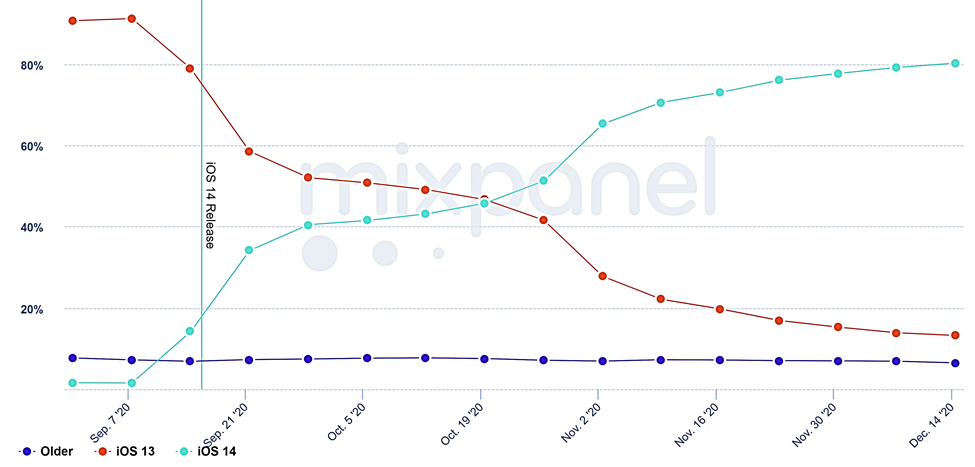
#4. You’ll Spend Less Time And Money Developing An iOS App
Let’s face it – with Android’s open-source structure offering limitless customization capabilities, mobile app developers are bound to spend quite some time creating and tweaking new apps.
Don’t get me wrong. The shift to Kotlin is helping save time all right, but not sufficiently enough to match up Android projects to iOS app development.
You see, on iOS, app developers are constrained to a specific set of homogenous coding parameters. There’s only so much they can customize on their systems.
And then, of course, there’s the fact that Apple’s Swift code is significantly leaner than Android’s Java, C++, and Kotlin. So much leaner, in fact, that Android apps generally require 40% more code than their iOS counterparts.
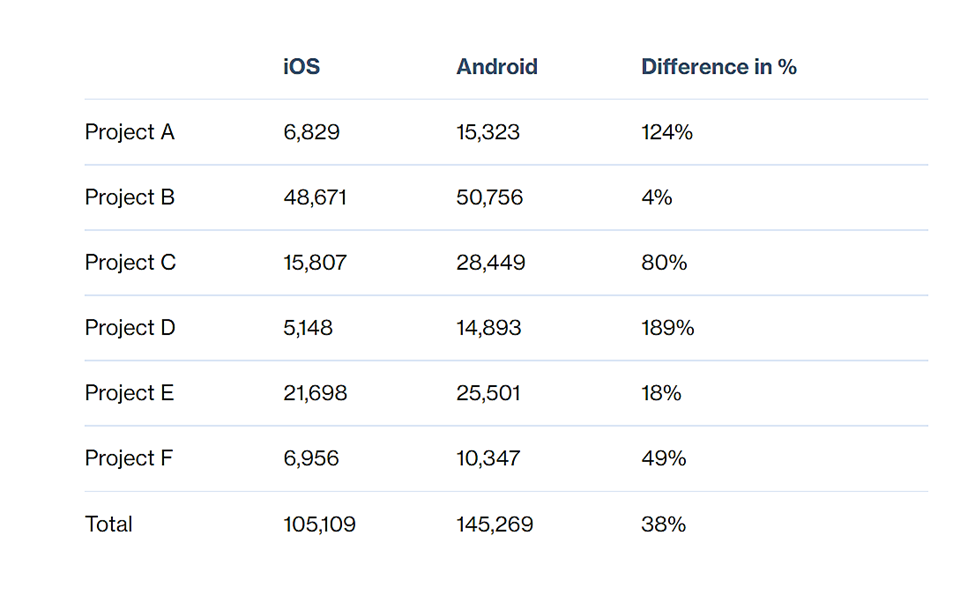
And that’s not all. Another problem with Android is, it comes with a much wider range of screen sizes. While iOS apps are normally built to run on Apple’s traditional device screens, Android apps have to be adapted to a whole range of devices with different screen resolutions and aspect ratios.
Now, when you combine all these factors, you’ll find that building an iOS app is bound to take you less time than creating a similar Android app. Industry estimates indicate that, on average, Android app development takes 30% longer than iOS app projects.
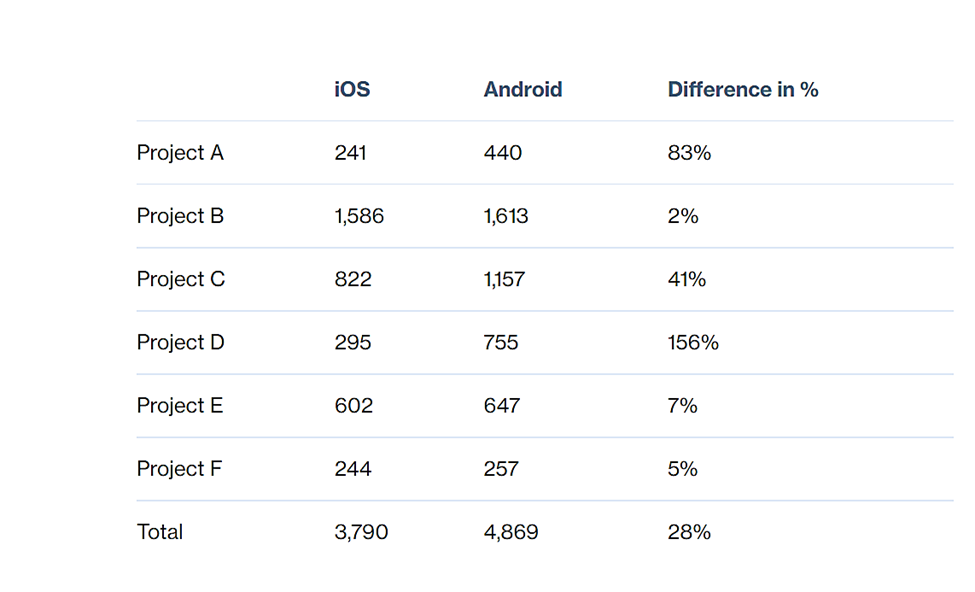
That means that if your iOS app took 500 hours to build, expect the same to take 650 hours or thereabout on Android.
And when translated into costs, the most logical conclusion here would be that Android app development is 30% more expensive than iOS app development.
#5. It’s Easier To Publish Your App On The Google Play Store, But The Review Process Is Much Faster On The Apple App Store
Although the Android app development process can be tedious and costlier, at least it all pays off when it comes to launching the app.
The Google Play Store, as it turns out, is much more accessible and accommodative than the Apple App Store. Many of the submitted apps ultimately get published because the app review process is not that selective. You just need to uphold the company’s policy guidelines, and your app will sail through all the quality reviews on the platform.
Unfortunately, the same cannot be said of Apple’s platform. The App Store’s review process is way more demanding than the Google Play Store’s.
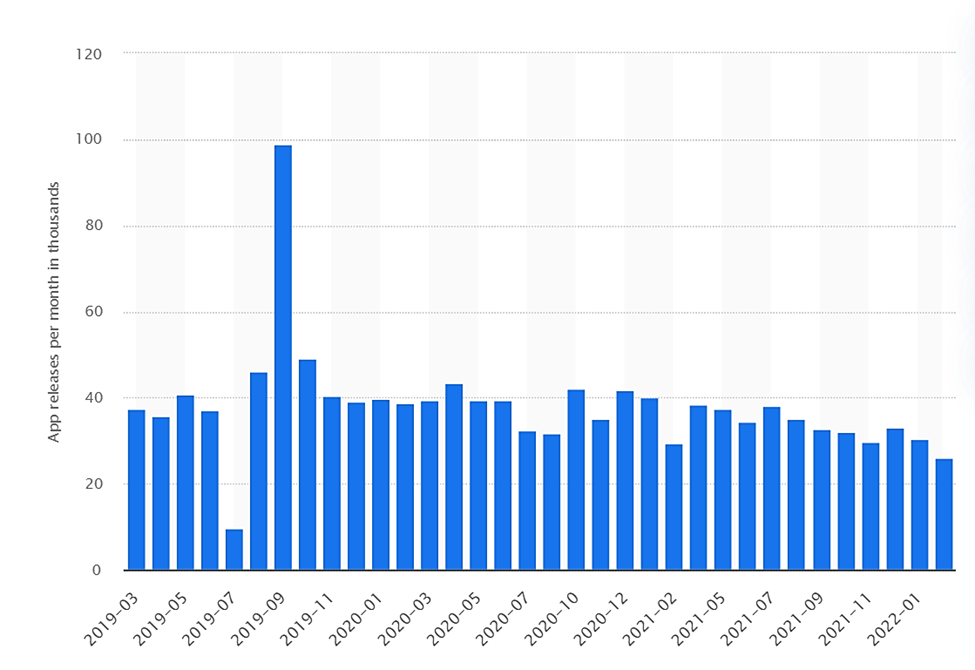
Every single iOS app is first taken through AI-controlled static and dynamic assessments, before finally being forwarded to human reviewers. All these checks are particularly strict about app performance, operability, content quality, security, UI, usefulness, etc.
And get this. Apple doesn’t offer any guarantees to app developers who abide by its rules. Even if your new app manages to ace all the App Store quality checks, it could still get rejected for being irrelevant.
So high is the rejection rate, in fact, that out of every 10 iOS app submissions, less than 7 get to sail through successfully. Apple itself admits to turning away about 1.7 million of its 5 million newly submitted apps every year, which translates to a rejection rate of 33% to 36%.
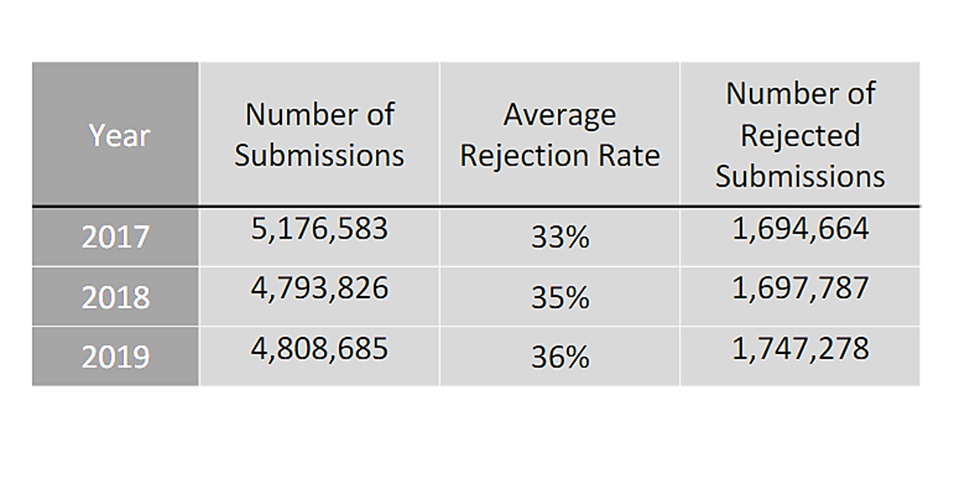
It’s not all bad news, though. Despite the high level of scrutiny on the App Store, iOS app submissions are usually processed within two days. On average, 50% of the submitted apps get to know their results in a day, while 90% are reviewed by the end of 48 hours
Conversely, the Google Play Store is known to take its sweet time reviewing app submissions. You can expect your Android app to wait in line for at least seven days, before ultimately being reviewed alongside thousands of other apps.
Verdict – Which Is Best For Your Mobile App Between iOS and Android?
Now that we’ve revealed what the iOS vs Android industry stats mean for your app development process, where would you rather go? Is your app better off starting on the Google Play Store of the Apple App Store?
I say it depends.
If you can afford to splurge your resources on two parallel app development processes, then by all means go for it. Your Apple developers could work on the iOS app while, at the same time, an Android development team proceeds to build a corresponding Android version.
As for app creators who’d prefer a more methodical approach, the truth is, there’s no absolute favorite between iOS and Android. While some apps would launch best on the Google Play Store, there are still many that would find the Apple App Store to be a more stable foundation.
To determine where you lie, you should calculatedly compare the two platforms while taking into account::
-
-
- Your app development expertise.
- Your target audience demographics.
- The app monetization model.
- The app’s features and functionalities.
- Your app development budget
- Where your competitors are concentrated.
-
If you’re thinking of launching a subscription-based app, for instance, you might want to start with Apple’s iOS. Its demographic has proven to be more receptive towards paid apps and in-app purchases.
The same can be said of apps that are looking to target users in the U.S. Their developers are bound to get more accurate market indicators from the Apple App Store experience.
Android, on the other hand, offers just the right foundation for free mobile apps, especially the ones that seek to generate income from ad views.
What’s more, we can agree that Android has quite an incredible growth trajectory, which makes it the best option for independent developers who intend to cut back on costs.
But, when it comes to in-app monetization, Apple is king. Now, combine that with the App Store’s homogeneity and you have yourself an ideal platform for developing simple paid apps that will run uniformly for everyone.
Summary – Key Takeaways For Android vs iOS App Development
To sum it all up, here are the most significant pointers that you ought to keep in mind:
-
-
- Android continues to rule the market as the most widely used mobile app OS. Its global market share of 70.97% gives you a user base of over 3 billion devices to target with your mobile app.
- iOS tends to be significantly more prominent across the richest regions of the globe.
- Apple devices account for 53% of the US market and 54% of the UK.
- iOS is, it presents less competition than the Android market, as you’ll only be competing with about two million other apps. With Android, though, you’ll be up against 3.5 million strong and counting. What’s more, the Google Play Store continues to throw in over 100,000 new apps per month
- Android users have a tendency to download fewer mobile apps per device. The average user here downloads 4.1 apps per month, which is 1.9 less than their iOS counterparts.
- While Android offers a much larger pool of prospective users, expect cutthroat competition from other app developers.
- US, Japanese, and UK-based developers will enjoy their time on the App Store, as it resonates best with audiences in those regions.
- The App Store currently manages about 34.4 billion app installs per year, while the Google Play Store attracts an impressive 111.3 billion.
- The Google App Store is now generating $47.9 billion per year, whereas the Apple App Store is turning its inferior app download numbers into a whopping annual revenue of $85.1 billion.
- Apple users are not only 20-30% more likely to make payments, but also tend to spend two and a half times more on in-app purchases than their Android counterparts.
- 71% of iOS users have committed to at least one app payment per month, a stark contrast to Android’s 4.6%. The result is that iOS apps end up with 50% more in-app purchases, with as much as 79% of the combined mobile app subscription revenue going to the App Store’s coffers.
- The Google Play Store, on the other hand, is a better option for free apps that rely on ads for revenue generation.
- Android tends to lean towards universal accessibility and unrestricted customization, while iOS apps are built on a more intricately structured but deeply streamlined framework.
- The Android platform itself happens to be fully open-source, as its source code is accessible to all developers.
- Java was the original programming language for Android, until Google announced a shift to Kotlin.
- While Java tends to be a bit cumbersome at times, the modern Kotlin programming language is simpler, faster, and more concise.
- Android’s programming language is turning out to be as easily readable and straightforward as the Apple Swift system.
- Android apps are intrinsically more vulnerable to malware and security breaches. Cybercriminals have now gotten to the point of releasing as many as half a million new malware each month.
- Android users are not quite the type to promptly update their device OS. As many as 50% of them are now running outdated versions, which is a stark contrast to the corresponding 90% adoption rate for iOS updates.
- The shift to Kotlin is helping save time all right, but not sufficiently enough to match up Android projects to iOS app development.
- Apple’s Swift code is significantly leaner than Android’s Java, C++, and Kotlin. So much leaner, in fact, that Android apps generally require 40% more code than their iOS counterparts.
- While iOS apps are normally built to run on Apple’s traditional device screens, Android apps have to be adapted to a whole range of devices with different screen resolutions and aspect ratios.
- Industry estimates indicate that, on average, Android app development takes 30% longer than iOS app projects. Hence, Android app development can be said to be 30% more expensive than iOS app development.
- The Google Play Store is much more accessible and accommodative to new apps than the Apple App Store.
- The App Store’s review process is way more demanding than the Google Play Store’s. Every single iOS app is first taken through AI-controlled static and dynamic assessments, before finally being forwarded to human reviewers.
- Even if your new app manages to ace all the App Store quality checks, it could still get rejected for being irrelevant.
- So high is Apple’s rejection rate, in fact, that out of every 10 iOS app submissions, less than 7 get to sail through successfully. Apple itself admits to turning away about 1.7 million of its 5 million newly submitted apps every year, which translates to a 33% to 36% rejection rate.
- Despite the high level of scrutiny on the App Store, iOS app submissions are usually processed within two days. On average, 50% of the submitted apps get to know their results in a day, while 90% are reviewed by the end of 48 hours.
- There’s no absolute favorite between iOS and Android. While some apps would launch best on the Google Play Store, there are still many that would find the Apple App Store to be a more stable foundation.
-
Over To You
Whichever you end up choosing between iOS and Android, remember that this is just the beginning.
And to make it all count in the end, you might want to pair your app development with a well-calculated mobile app marketing plan.
Believe me – with the level of competition nowadays across both app stores, only the few that start early with well-thought-out pre-launch app promotions get to hit the ground running.
I’ve worked with over 3,000 apps myself, and I can tell you that there’s no such thing as too early in mobile app marketing. Strategic pre-launch app marketing combined with high-level post-launch campaigns have, so far, helped us drive over half a billion mobile app downloads on both Android and iOS.
Get in touch with us today to learn how we can use the same proven strategies to not only steal the limelight on your app launch date, but also sustain the momentum as you expand to other platforms.
Newsletter
Don’t miss a thing! Sign up to receive daily news
Subscribe Newsletter

